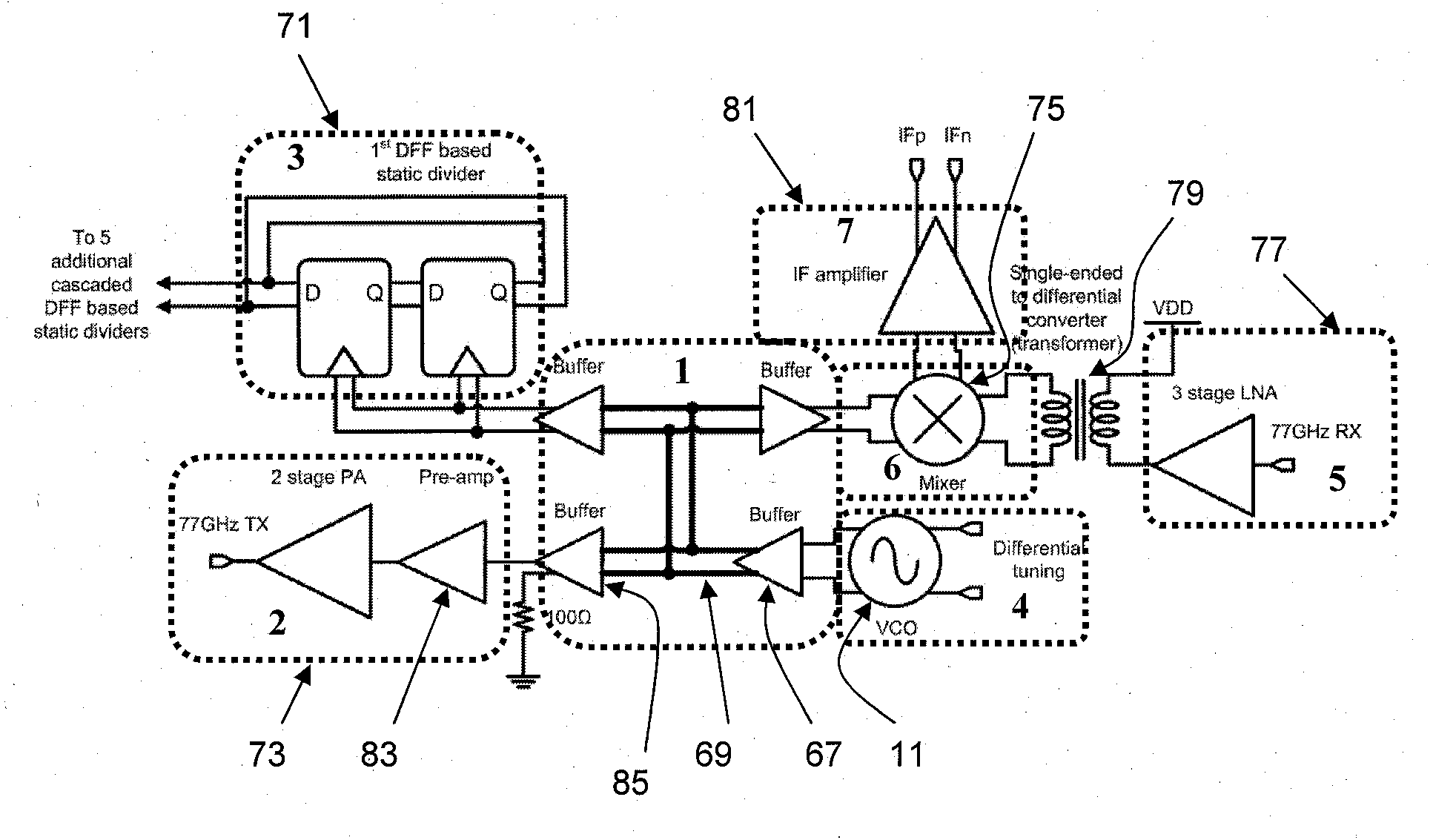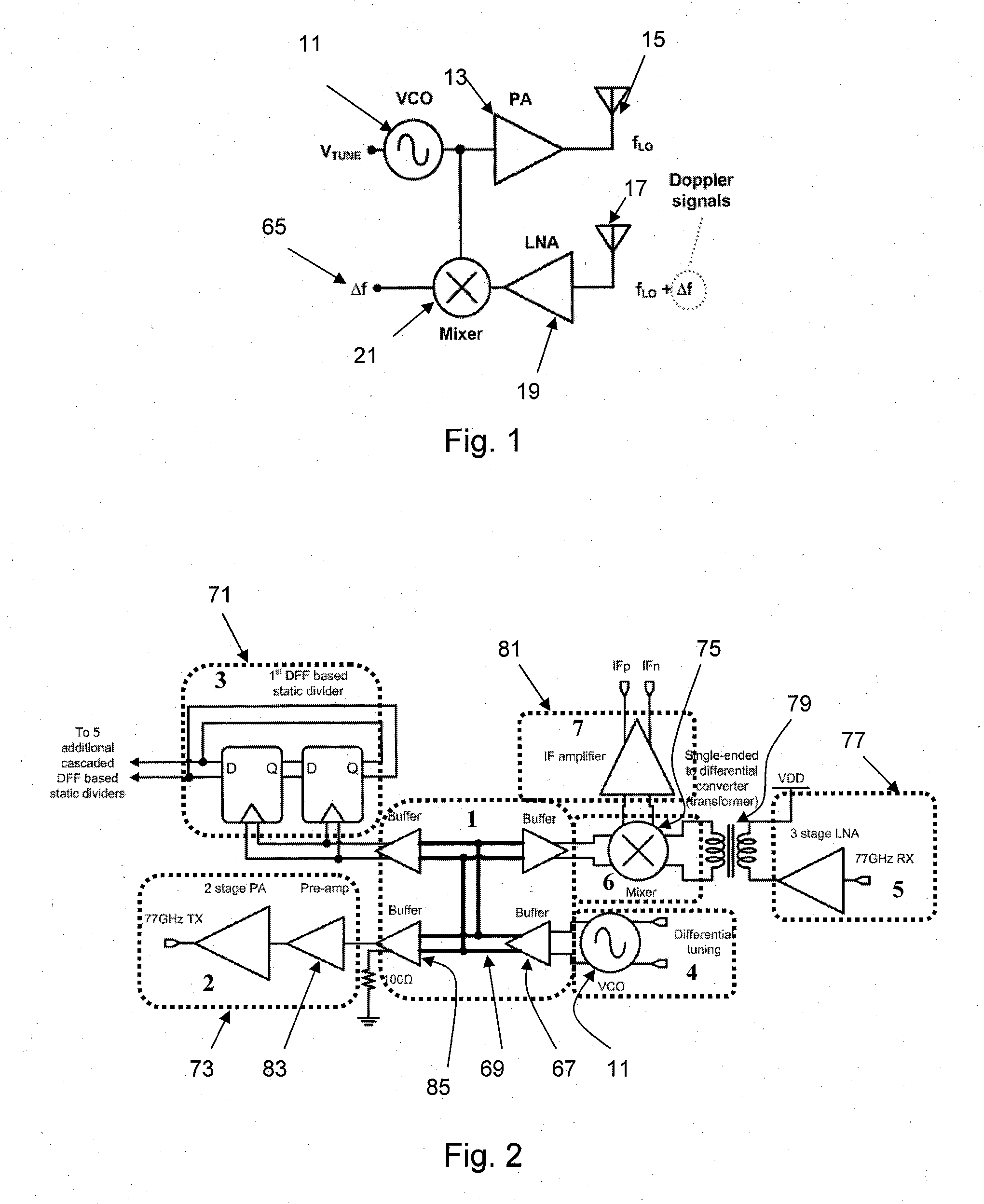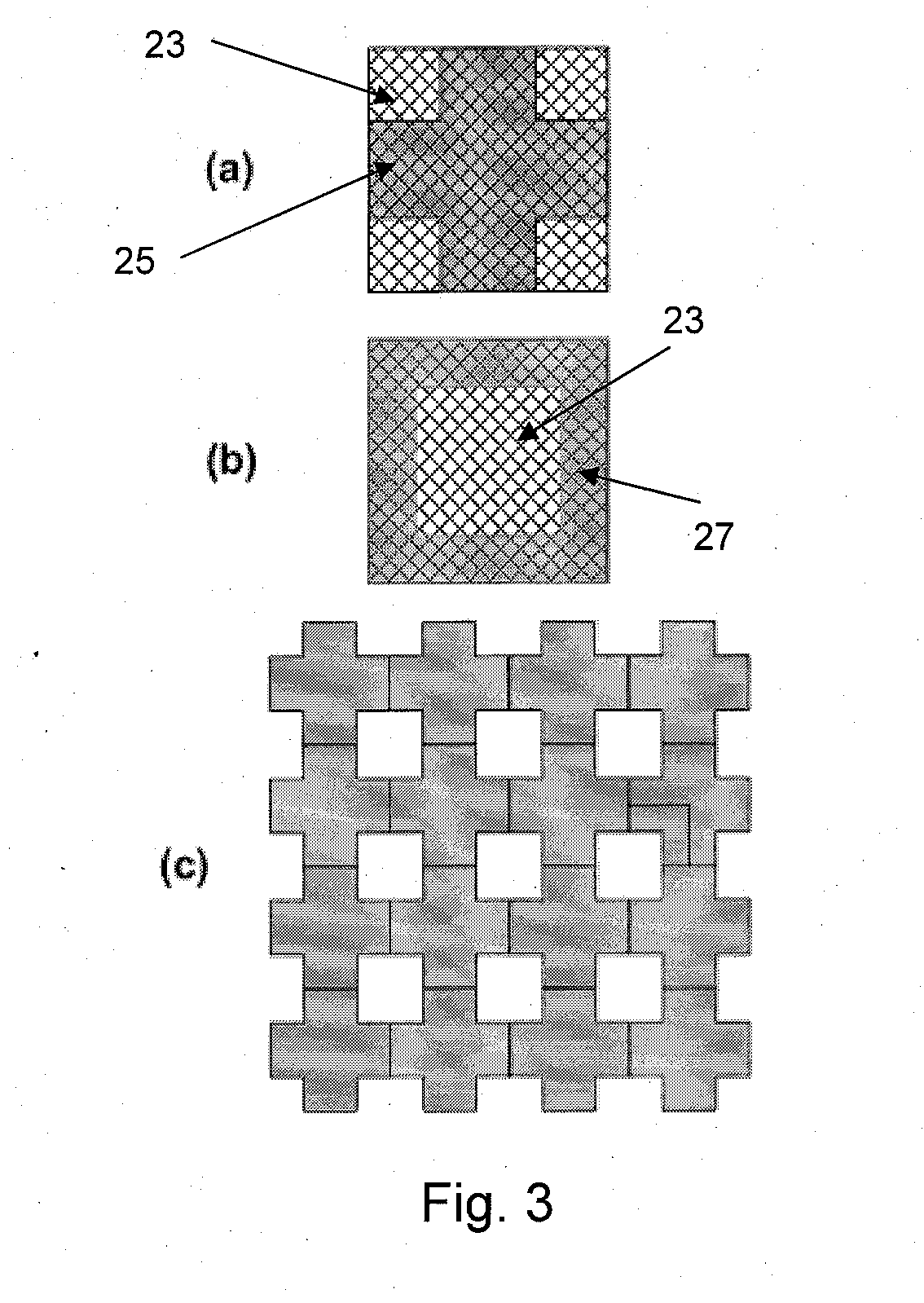System and method for a single chip direct conversion transceiver in silicon
- Summary
- Abstract
- Description
- Claims
- Application Information
AI Technical Summary
Benefits of technology
Problems solved by technology
Method used
Image
Examples
embodiments
[0089]The frequency band of 77-81 GHz has been designated for automotive use and therefore a W-band transceiver that operates within this narrower frequency band could be used in automotive applications.
[0090]FIG. 1 illustrates a direct conversion transceiver. The Doppler shift due to a moving target is indicated by a frequency shift Δf (65) in the reflected LO signal.
[0091]A single-chip silicon direct-conversion transceiver may contain four core components: low-noise amplifier (LNA) (19), voltage-controlled oscillator (VCO) (11), power amplifier (PA) (13), and down-conversion mixer (21), arranged as illustrated in FIG. 1, and fabricated together on the same silicon substrate.
[0092]One embodiment of a single chip direct conversion transceiver is illustrated in FIG. 2. In this embodiment, the voltage-controlled oscillator (VCO) (11) may drive a single buffer (67), which may drive a network of transmission lines (69) that may distribute the signal to the 6-stage static frequency divid...
experimental verification
[0107]Experimental verification was conducted using a 0.13 μm SiGe BiCMOS process with fT / fmax of 170 / 200 GHz implementing the embodiment given in FIG. 2. The selected frequency for the LO was 77 GHz.
[0108]The transceiver produced a gain over 20 dB.
[0109]Relative to prior art 77 GHz transceivers, the present invention experiences a relatively high linearity, relatively low noise, and low die area.
PUM
 Login to View More
Login to View More Abstract
Description
Claims
Application Information
 Login to View More
Login to View More - R&D
- Intellectual Property
- Life Sciences
- Materials
- Tech Scout
- Unparalleled Data Quality
- Higher Quality Content
- 60% Fewer Hallucinations
Browse by: Latest US Patents, China's latest patents, Technical Efficacy Thesaurus, Application Domain, Technology Topic, Popular Technical Reports.
© 2025 PatSnap. All rights reserved.Legal|Privacy policy|Modern Slavery Act Transparency Statement|Sitemap|About US| Contact US: help@patsnap.com



